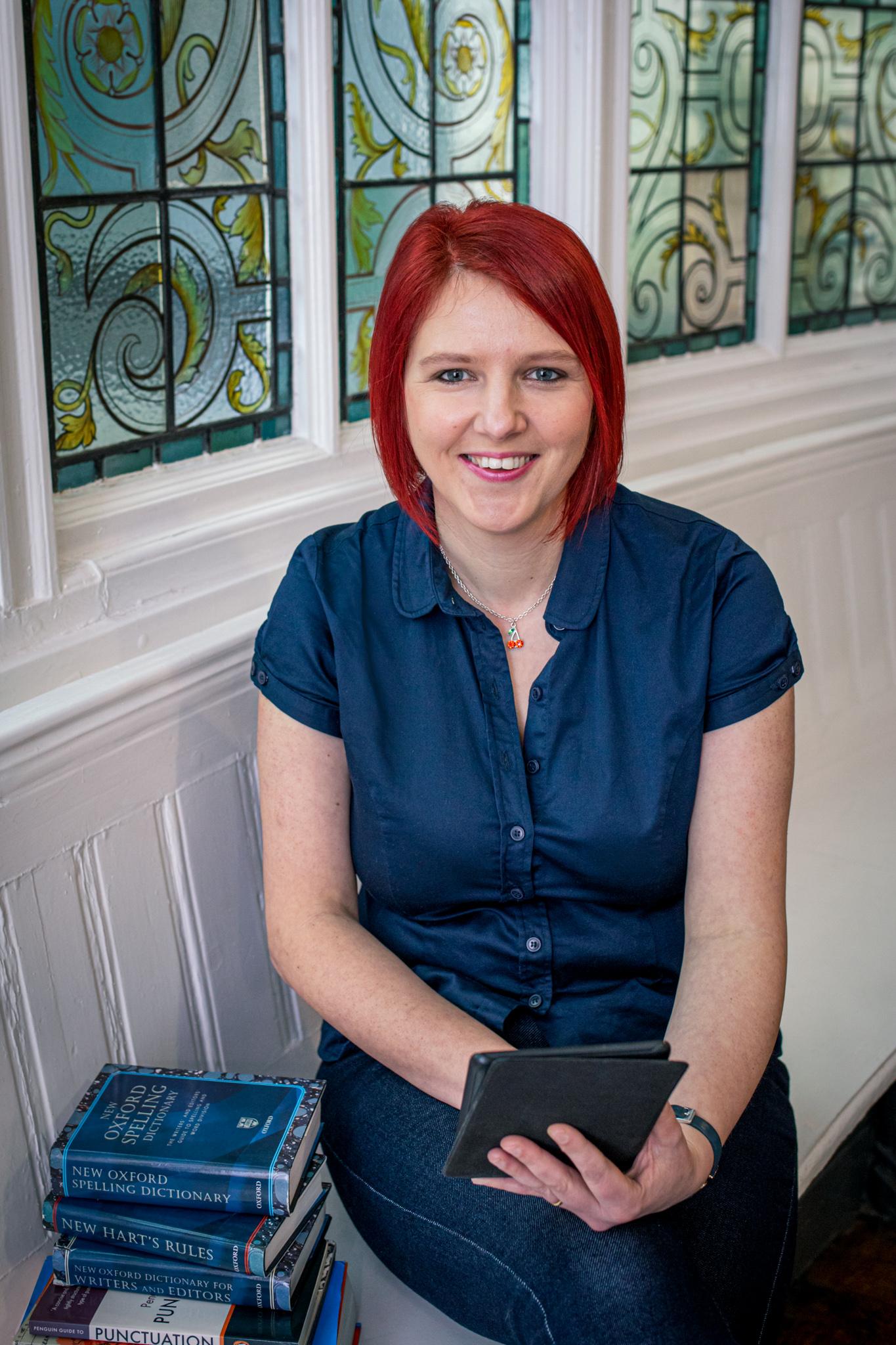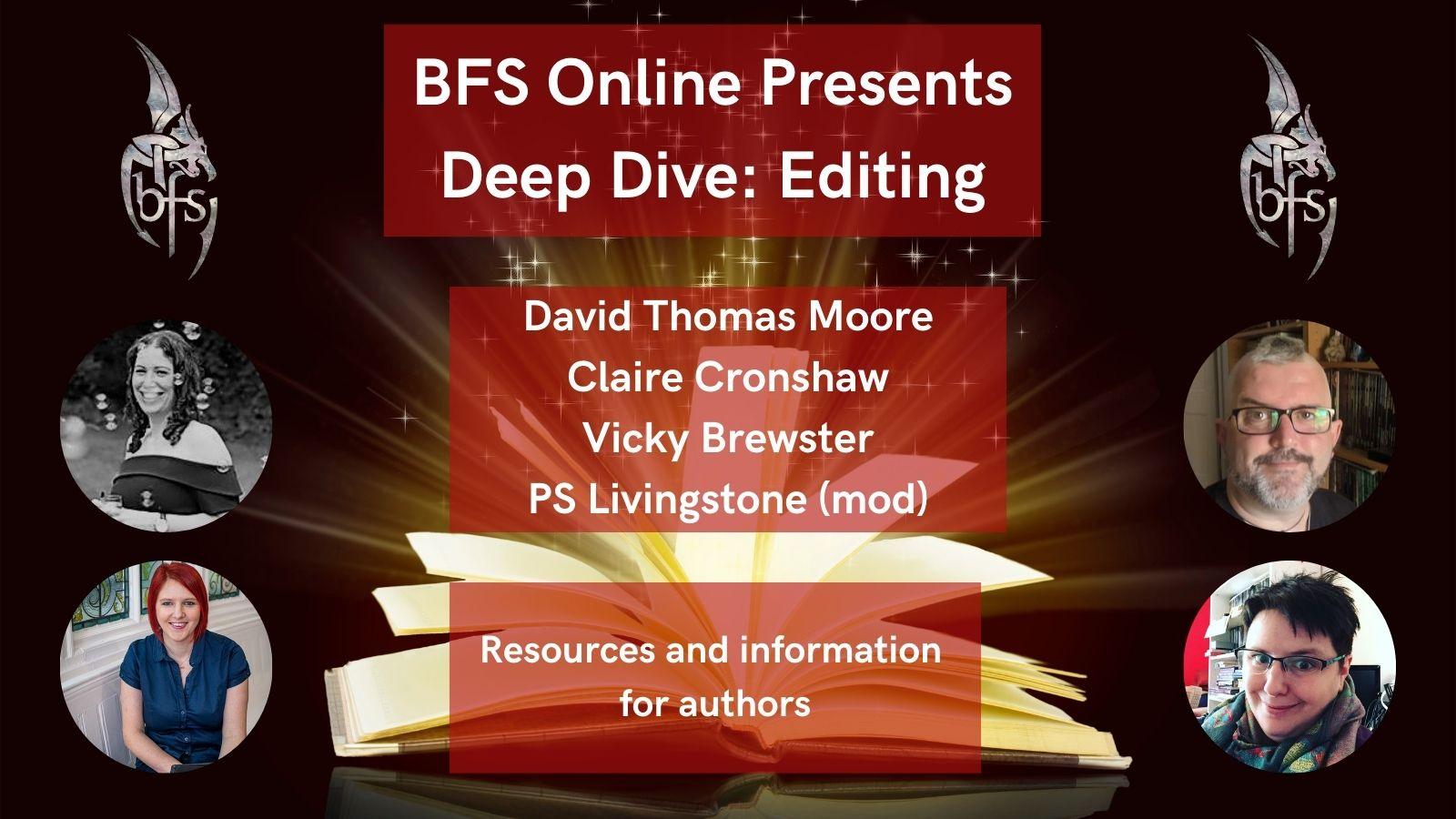Thank you to everyone who attended the BFS Online Deep Dive: Editing panel. It was wonderful to see so many of you there and I hope you enjoyed it as much as I did. Extra special thanks go to David Thomas Moore, Claire Cronshaw and Vicky Brewster for bringing their expertise, and to Rebecca Kaur for volunteering her WIP for assessment. It’s a brave thing to do and we’re very grateful. We wish Rebecca all the best for her book and look forward to seeing on the shelves one day soon.
“The editor responsible for most of the weird modern comma rules people insist on today was Harold Ross, editor-in-chief of the New Yorker from its founding in 1925 to his death in 1951. James Thurber recounts in his memoir The Years With Ross that an English professor once wrote to him to ask why there was a comma in the line “After dinner, the men went into the living-room†(which Thurber had written in the New Yorker), and Thurber explained that the comma was to give the gentlemen time to push their chairs back.”
Below, you can find a list of the resources discussed on the panel. And you can download a sample style sheet here. Please note, this is only an example. Additional information can be added, such as timelines, family relationships, jargon and new languages, titles and ranks, etc., to suit your needs. Some people prefer to work on an Excel spreadsheet, using tabs for the headings. A style sheet is a guide, and it may change over time, but it’s useful to maintain consistency and it’ll help both you and your editor to polish your work.
Please scroll down to find out more about our panellists.
Official Style Guides
Chicago Manual of Style: David’s preferred source for US style. Also probably the most up-to-date style guide, as they’re constantly reviewing and revising their advice to reflect both shifts in usage and cultural and social change. A subscription to CMOS is also really useful if you’re using it regularly. Vicky highly recommends the QuickStudy Academic Chicago Manual of Style cheat sheet for referencing and dealing with the most common queries in CMOS.
The Oxford Style Manual: Absolutely the best source for fussy minutiae, e.g. how to style symphony names or which countries capitalise the word “Army.†This books combines the New Oxford Dictionary for Writers and Editors and the New Hart’s Rules, along with few extra appendices. The NHR is Pam and Vicky’s go-to.
New Oxford Spelling Dictionary: Unambiguous guidance on spelling and form for over 100,000 words. UK and US spellings. Other dictionaries include, Collins, Merriam-Webster and Chambers.
Fowler’s Dictionary of Modern English Usage: Comprehensive and practical advice on the complexities of grammar, syntax, punctuation, style, and word choice. It provides examples of usage, old and new, and references English used across the world.
Penguin Guide to Punctuation: A jargon-free, succinct guide to punctuation.
The Elements of Style by William Strunk, Jr. and E. B. White: Known generally as Strunk & White rather than by its title, this ancient, slender volume is the best source of those archaic eighteenth-century rules that no-one remembers or really follows any more.
Butcher’s Copy-editing: The Cambridge handbook, covering just about everything you’d ever need to know. Great tips on typesetting and printing technology, as well as information on ebooks.
The Copyeditor’s Handbook: The latest advice from new editions of major style guides, including CMOS, highlighting changes in copy-editing, formatting and new technologies. It also addresses writing English as a second language and accessibility, plus some light entertainment for language lovers.
Grammar for Grown-ups by Craig Shrives: One to dip your toes in, if you’re not ready for the heavy stuff. Comprehensive but light-hearted.
Other Resources
PerfectIt: Proofreading software that helps you check for consistency. Have you hyphenated one word and not another? Used two different spellings for a character’s name? This software can help you spot these errors, so you can focus on the words. Like any software, it isn’t a replacement for an editor, but it can smooth out some wrinkles before you send your MS.
Macros: If you don’t know what macros are, don’t worry. They basically enable you to automate routine operations and tasks in Microsoft programs. As a writer, you’ll mostly be using them in Word to make complex actions simple. Claire recommends Docalyse, Hyphenalyse, Propernounalayse, which you can download from Paul Beverley’s website.
Google Ngrams: Google Ngram Viewer is a tool that allows you to explore language usage trends over time by searching through a vast collection of books, documents, and other textual sources. Just pop it into a Google search and give it a try.
Practice with Pronouns: An excellent resource for learning how to use pronouns. Language evolves and so must our understanding of it. Using pronouns correctly may not come naturally for everyone, so click here to learn how. Pam found this especially helpful when editing trans characters in a fantasy setting.
Editors need to be conscious and cautious of experiences outside their own. Style and voice vary across the world and it’s our job to polish a manuscript, not change it to our own perspective. As such, we’re always learning, adapting, and growing as creatives, just like you, and these resources help us do that. We’re here to guide, support, and offer our expertise, but the final decision always rests with the author.
Panellists

David Thomas Moore: David Thomas Moore has been an editor at Rebellion Publishing Ltd (home of Solaris, Rebellion and 2000 AD) for nearly fifteen years. He is a devoted geek and grammar nerd, a lifelong roleplayer, and an indifferent swordsman. He lives in Reading, Berkshire with his wife and daughter. You can follow David on Twitter and Bluesky.

Claire Cronshaw: Claire Cronshaw of Cherry Edits is an indie fiction specialist who line and copy edits SFF, romance, and women’s fiction. Claire lives in northern England with her husband, author Jon Cronshaw, her son, and their dog. When she’s not editing, she’s reading or listening to audiobooks, baking, stretching (Pilates!), or walking along the prom. Find out more about Claire on her website. Or follow her on Twitter, Facebook, Threads and Instagram.

Vicky Brewster: Vicky is a freelance editor of long-form fiction, specialising in SFFH. They are also near completing their Ph.D. in English Literature at Swansea University, researching hauntings in 21st-century fiction. Find out more about Vicky on her website.

PS Livingstone writes epic contemporary fantasy. She is a Page Turner Award finalist and the author of Awakening, as well as numerous short stories. Suiting her reputation as a renowned grammar fiend, Pamela works as a ghostwriter and editor. As someone who can’t say no, she is also an Area Head for Glasgow 2024 and Online Event Co-ordinator for the BFS. She is a member of the Glasgow Science Fiction Writers’ Circle, Society of Authors, and the Chartered Institute of Editors and Proofreaders. Pamela lives in Glasgow with her partner and three cats, and can often be found in her allotment, usually covered in mud. Find out more about PS Livingstone at her website or follow her on Twitter, Threads or Bluesky.
If you have any recommendations for resources, please pop them in the comments. Thanks.

